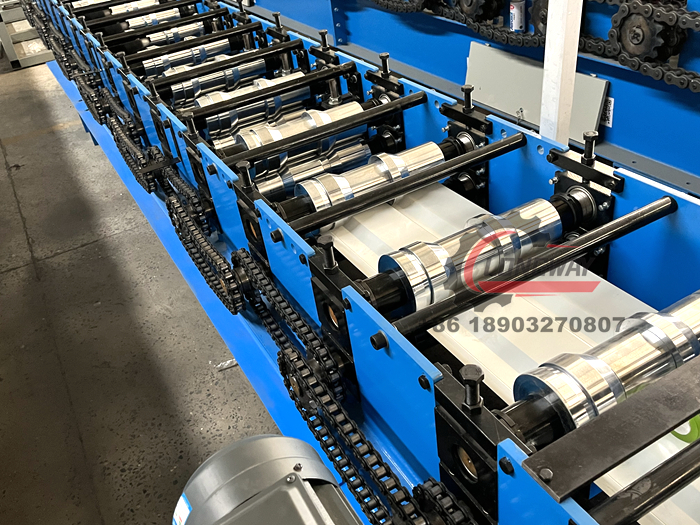ceiling batten roll forming machine
The Ceiling Batten Roll Forming Machine Revolutionizing Construction Materials
In the fast-evolving world of construction, efficiency, consistency, and quality are paramount. One innovation that has been making waves in the industry is the ceiling batten roll forming machine. This sophisticated technology not only streamlines the manufacturing process but also enhances the quality of construction materials, leading to significant advantages for builders and contractors alike.
What is a Ceiling Batten Roll Forming Machine?
A ceiling batten roll forming machine is a specialized piece of equipment designed to manufacture ceiling battens, which are essential for supporting ceiling panels and other architectural elements. The machine forms metal strips into various profiles by passing the metal through a series of rollers. These rollers bend the metal to create specific shapes, allowing for high-volume production of consistent and precise battens.
The Importance of Ceiling Battens
Ceiling battens serve as a crucial structural component in modern construction. They are used to create a stable framework that supports ceiling tiles, plasterboard, and other finishing materials. The durability and strength of the battens directly influence the overall integrity and aesthetic appeal of a ceiling. Therefore, using high-quality battens produced by advanced machinery is vital for achieving long-lasting and visually pleasing results.
Advantages of Using a Ceiling Batten Roll Forming Machine
ceiling batten roll forming machine

1. Efficiency and Speed The automated nature of roll forming machines allows for rapid production of ceiling battens. Unlike traditional manufacturing methods, which can be labor-intensive and time-consuming, roll forming machines can produce large quantities of battens in a fraction of the time. This increased efficiency translates into cost savings for manufacturers and faster turnaround times for construction projects.
2. Consistent Quality One of the most significant benefits of using a roll forming machine is the consistency in product quality. The precision of the rollers ensures that each batten produced meets the exact specifications required. This uniformity reduces waste and the need for rework, leading to higher quality construction and greater customer satisfaction.
3. Flexibility and Customization Modern ceiling batten roll forming machines can often be adjusted to produce a variety of profiles and sizes. Manufacturers can easily switch between designs without significant downtime, making it simple to customize products to meet specific project needs. This versatility is crucial in a market where aesthetic preferences and structural requirements can vary widely.
4. Material Efficiency With rising material costs, manufacturers are increasingly focused on minimizing waste. Roll forming allows for the efficient use of metal sheets, as the process is designed to maximize material yield. Additionally, the capabilities of modern machines often enable the use of advanced materials that offer better performance while remaining cost-effective.
5. Durability and Performance Battens produced with roll forming machines are often superior in terms of strength and durability. The process of cold forming enhances the structural integrity of the metal, making it more resilient to environmental factors such as moisture, temperature fluctuations, and corrosion. This durability is essential for maintaining the safety and longevity of building structures.
Conclusion
The ceiling batten roll forming machine represents a significant advancement in construction technology, offering numerous benefits for manufacturers and builders alike. With its ability to produce high-quality, consistent, and customized battens efficiently, it helps address the demands of modern construction projects. As the building industry continues to evolve, embracing innovations like roll forming machines is crucial for staying competitive and meeting the challenges of future construction needs. Investing in this technology not only improves product quality but also contributes to greater efficiency, reduced costs, and ultimately, enhanced customer satisfaction in the building sector.
-
Roof Panel Machines: Buying Guide, Types, and PricingNewsJul.04, 2025
-
Purlin Machines: Types, Features, and Pricing GuideNewsJul.04, 2025
-
Metal Embossing Machines: Types, Applications, and Buying GuideNewsJul.04, 2025
-
Gutter Machines: Features, Types, and Cost BreakdownNewsJul.04, 2025
-
Cut to Length Line: Overview, Equipment, and Buying GuideNewsJul.04, 2025
-
Auto Stacker: Features, Applications, and Cost BreakdownNewsJul.04, 2025
-
Top Drywall Profile Machine Models for SaleNewsJun.05, 2025








